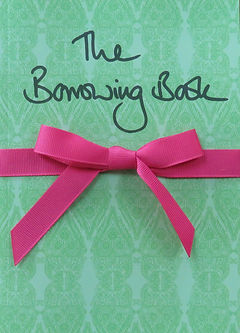

I love Marie Kondo's approach to tidying: only keep things that bring you joy.
Credit: WIX AI Image Creator
It's a great rule of thumb. Look at the objects around you in your home and ask yourself if you really like everything. Does what's on display in each room make you feel good and evoke happy memories? Or does all your 'stuff' make you feel irritated and a bit overwhelmed?
If it's the latter, then don't worry - it can absolutely be fixed.
Tidying will involve getting rid of some things and storing others, so get ready to roll up your sleeves! But the result will be that you're left with only those items that bring a positive vibe to your home - and your life.
Decluttering
There's a common perception/misconception that decluttering means getting rid of all your personal bits'n'bobs and having lots of clear surfaces.
That works if you're into minimalism; but that's not most people.
To me, decluttering simply means not overcrowding rooms and surfaces and not having things out of place, so that your home looks tidy but, crucially, isn't bland.

Surround Yourself with Objects You Love
"Many people have equated my tidying method with minimalism, but it’s quite different. Minimalism advocates living with less; the KonMari Method™ encourages living among items you truly cherish.
Joy is personal. Each individual’s ideal life – and space – will look different from the next. If minimalism is a lifestyle that sparks joy for someone, I encourage that; in the same way, if someone has determined that many items in their life spark joy, that’s okay, too!"

“Have nothing in your house that you do not know to be useful, or believe to be beautiful.”
~ William Morris, British textile designer
1
2
Organising
There are four basic stages to organising:
Weeding
Give everything a good, hard stare and really think about whether you need to keep it. Of the things you're happy to part with, decide which could you sell, give away or donate to charity, and which just need to be thrown away.
Set aside things you don't use or look at regularly but still want to keep, to be stored safely in the loft/basement/garage.
Categorising
Put like with like. There are no hard and fast rules here - just do what makes sense to you.
For instance, some people put books in genres, while others choose to group them in colours for a striking visual effect. But categorise things in such a way that when you need to lay your hands on something, you'll know exactly where to look for it.
This process also helps show you whether you have too much or too many versions of something - cue further weeding and pruning! - and you'll be able to see exactly how much space you need to display or store everything.
3
4
Arranging
Make sure that however you arrange your possessions, they're pleasing to both the eye and the mind - i.e. they look good and you can easily find things when you need to.
For organising things that are on display, see my 'Displaying' page.
When it comes to stuff in drawers, cupboards, wardrobes, etc. - anything that's kept out of sight - the key is containment. Like Marie Kondo, I've always been a big fan of sub-dividing with little boxes and baskets so that you can keep things neatly in their categories - and for things on shelves, clear acrylic boxes will allow you to see the contents at a glance.
Storing
Anything you have in storage should be in clearly labelled containers and organised by category. It's only too easy to allow storage areas in your home to become dumping grounds, and that's when things get out of hand!
And bear in mind that there are only three reasons for something to be in storage: it's only used occasionally; it's being kept to pass on to someone at a later date; it's 'emotional debris' that you absolutely can't bear to part with - and, even then, make sure you're not holding on to anything unnecessarily.
Finally, one of the keys to successful organising is not trying to tackle too much at once, so don't set yourself any unachievable targets. While you might be able to blitz the whole kitchen or sitting room in one day, if you can only manage one cupboard, set of shelves or wardrobe at a time, that's okay!


Keep track of things you borrow and lend with a Borrowing Book!
Do you love sharing things with your friends, but have trouble keeping on top of what’s where and whose it is?
Then you need a Borrowing Book ~ a pretty journal for noting down all the things you borrow and lend, helping you avoid the puzzlement of ‘now who’s got my…?’ and the guilt of knowing ‘it’ isn’t yours but not being able to remember whose it is! It's my small contribution to a more harmonious journey through life.
Oh, and it looks fab on your bookshelf ;)

If you're determined to get your cupboards, drawers and wardrobes organised and need a bit of motivation, it's worth taking a look at how Clea and Joanna do it...
















